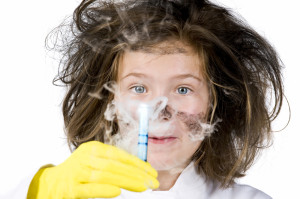 More dirty energy leaks and explosions, heated climate change debate and kids’ brains on chemicals
More dirty energy leaks and explosions, heated climate change debate and kids’ brains on chemicals
Some of what’s been going on in environmental news gives a whole new meaning to oily discharge and passing gas.
What side effects can we expect from the incessant gas, oil and chemical spills?
And is it me, or are these dirty energy mishaps happening on a more and more frequent basis?
The good news is that lawmakers are pushing stricter legislation on Capitol Hill that would grant states more oversight power for chemical facilities. Let’s hope they get somewhere with that. Oh, and in WTF news, Chevron gave out free pizza coupons to a community after a recent fire and gas well explosion.
Climate change has been getting more media attention recently with winter storms across the U.S., California drought and President Obama’s $2 billion+ pledge for California and the U.S. Climate Resilience Fund (to help prepare communities for consequences of extreme weather events), not to mention the extreme heat in Australia and John Kerry calling climate change “perhaps the world’s most fearsome weapon of mass destruction.”
Discouraging news for parents: Researches found six additional chemicals that can hamper normal brain development. These chemicals include manganese and fluoride (found in drinking water); the remaining chemicals are found in solvents and pesticides. No surprise that rates of autism, attention-deficit/hyperactivity disorder (ADHD) and dyslexia have soared in recent years.
Listen to this week’s Green Divas myEARTH360 Environmental News Update for 2.20.14
West Virginia asks feds to study possible health effects of chemical spill
West Virginia’s governor is asking federal authorities to do further study on the possible health effects caused by last month’s chemical spill near Charleston.
“It is critical this study is funded and that work begins immediately,” wrote Gov. Earl Ray Tomblin in a letter Tuesday to Dr. Tom Frieden, director of the Centers for Disease Control and Prevention.
On January 9, the chemical — 4-methylcyclohexane methanol, or MCHM — was discovered leaking from a storage tank into the Elk River and from there into Charleston’s water supply. Its licorice smell alerted residents to the contamination and led to a do-not-use order for 300,000 West Virginians, some of whom could not drink or bathe in their water for more than a week. Read the full CNN story…
 Chevron Controversy: Free Pizza Coupons After Gas Well Explosion?
Chevron Controversy: Free Pizza Coupons After Gas Well Explosion?
Nearly a week after a massive fire and gas well exploded in Greene County, gas giant Chevron is under fire for their response to the blaze. The explosion was so intense, neighbors reported feeling the ground shake. It took several days for Chevron to cap the massive blaze.
A worker is missing, and presumed killed in the blast in Dunkard Township, about a mile from the small town of Bobtown.
The controversy now surrounds what Chevron reportedly did after the blaze. Chevron went door to door to 100 homes surrounding the blaze, leaving coupons for free pizza in response to the explosion. Read the full story…
Fracking Well Blowout Causes Oil And Chemical Wastewater Spill In North Dakota
An oil well owned by Whiting Petroleum Corp. started leaking hydraulic fracturing fluid and spewing oil late on Thursday, after a blowout that company and state officials said may take “a couple more days” to clear up, according to Friday reports in Reuters.
The well lost control after a blowout preventer failed, and began leaking between 50 and 70 barrels (2,100 to 2,940 gallons) per day of fracking fluid — a mixture of generally classified chemicals, water, and sand — and 200 barrels (8,400 gallons) per day of oil, the Reuters reports said. As of Friday, fluids from the leak were being collected and trucked from the site. Whiting is maintaining that none of the liquids entered the water, though some oily “mist” did spray onto the frozen creek.
“This [leak] is a large one and also a health and human risk, it’s a big one,” Lynn Helms, the head of the state’s Department of Mineral Resources, said in a conference call.
“Pressure and control of a well is essentially priority number one for oil and gas companies.” Read the full story…
Gripping Report and Film Reveal How Fracking Boom Destroys Texans’ Lives
Shelby Buehring was born in South Texas and bought a home there in 1995, but he has grown to hate the area.
That’s because the area’s fracking boom caused his wife, Lynn, to depend on an inhaler to help her breathe properly amid an atmosphere rife with thick black smoke, strong stenches and other environmental effects from fracking near their Karnes County home.
The Buehrings are two of several people the Center for Public Integrity, InsideClimate News and The Weather Channel spoke to as part of a most-gripping report and short film package released Tuesday that exposes the impact of fracking as well as any on record.
“There’s nothing we can do,” Shelby Buehring said of living near the Eagle Ford Shale play. “Nobody is listening to us.
Watch this 15-minute film about it:
MSNBC’s “The Ed Show” Covers Court Ruling Finding Keystone XL Routing Unconstitutional
“TransCanada has no approved route in Nebraska… the pipeline project is at a standstill in this state,” stated David Domina, attorney for landowners who sued over the process that granted eminent domain authority to TransCanada for routing its proposed Keystone XL pipeline in Nebraska.
“Citizens won today. We beat a corrupt bill that Gov. Heineman and the Nebraska Legislature passed in order to pave the way for a foreign corporation to run roughshod over American landowners,” said Bold Nebraska director Jane Kleeb.
On Feb. 19, Nebraska District Court Judge Stephanie Stacy ruled that LB 1161 is unconstitutional; the law fast-tracked approval of the Keystone XL pipeline route in Nebraska, and wrested the power of eminent domain from the Public Service Commission — as designated under the state’s constitution — and gave it to Gov. Dave Heineman, who gave KXL the green light. Read the full story…
China To Spend $330 Billion In Attempt To Clean Polluted Water
China plans to spend 2 trillion yuan, or $330 billion, on an action plan to tackle pollution of its scarce water resources, state media said on Tuesday.
China has a fifth of the world’s population but just 7 percent of its water resources, and the situation is especially precarious in its parched north, where some regions have less water per capita than the Middle East.
The plan is still being finalized but the budget has been set, exceeding the 1.7 trillion yuan ($277 billion) China plans to spend battling its more-publicized air pollution crisis, the China Securities Journal reported, citing the Ministry of Environmental Protection. It will aim to improve the quality of China’s water by 30 to 50 percent, the paper said, through investments in technologies such as waste water treatment, recycling and membrane technology. Read the full Business Insider story…
Solar-induced hybrid fuel cell produces electricity directly from biomass
Although low temperature fuel cells powered by methanol or hydrogen have been well studied, existing low temperature fuel cell technologies cannot directly use biomass as a fuel because of the lack of an effective catalyst system for polymeric materials.
Now, researchers at the Georgia Institute of Technology have developed a new type of low-temperature fuel cell that directly converts biomass to electricity with assistance from a catalyst activated by solar or thermal energy. The hybrid fuel cell can use a wide variety of biomass sources, including starch, cellulose, lignin – and even switchgrass, powdered wood, algae and waste from poultry processing.
The device could be used in small-scale units to provide electricity for developing nations, as well as for larger facilities to provide power where significant quantities of biomass are available. Read the full phys.org story…
Children Exposed to More Brain-Harming Chemicals Than Ever Before
In recent years, the prevalence of developmental disorders such as autism, attention-deficit/hyperactivity disorder (ADHD) and dyslexia have soared. While greater awareness and more sophisticated diagnoses are partly responsible for the rise, researchers say the changing environment in which youngsters grow up may also be playing a role.
In 2006, scientists from the Harvard School of Public Health and the Icahn School of Medicine at Mount Sinai identified five industrial chemicals responsible for causing harm to the brain — lead, methylmercury, polychlorinated biphenyls (found in electric transformers, motors and capacitors), arsenic (found in soil and water as well as in wood preservatives and pesticides) and toluene (used in processing gasoline as well as in paint thinner, fingernail polish and leather tanning). Exposure to these neurotoxins was associated with changes in neuron development in the fetus as well as among infants, and with lower school performance, delinquent behavior, neurological abnormalities and reduced IQ in school-age children.
Now the same researchers have reviewed the literature and found six additional industrial chemicals that can hamper normal brain development. Read the full TIME story…
Mainstream Media Goes Big on Climate Change and Extreme Weather Coverage
This week, all four major broadcast networks covered extreme weather and climate change on their Sunday morning political talk shows. Those programs have largely ignored global warming in recent years, making their effort to address the issue unusual and laudable. But several of the segments also demonstrated the vulnerability inherent in treating science as a political debate where both sides receive a platform to air their positions.
Major winter storms across the U.S. in the month of February, drought in California, and President Obama’s call for a $1 billion climate change “resilience fund” sparked debates this week over the need for action against climate change. The science of global warming is settled: according to one survey, 97 percent of climate scientists agree that climate change is real and that “humans are causing global warming.” But the Sunday shows, because they are built on a model of showing political conflicts, have difficulty putting that fact in context. Read the full EcoWatch story...
John Kerry: Climate change as big a threat as terrorism, poverty, WMDs
Saying that climate change ranks among the world’s most serious problems — such as disease outbreaks, poverty, terrorism and the proliferation of weapons of mass destruction — U.S. Secretary of State John Kerry called on all nations to respond to “the greatest challenge of our generation.”
Kerry, speaking before college students in Jakarta, Indonesia, also criticized climate-change deniers, saying “a few loud interest groups” shouldn’t be given the chance to misdirect the conversation. Kerry reiterated U.S. President Barack Obama’s assertion in the State of the Union address that climate change is an undeniable fact.
“We should not allow a tiny minority of shoddy scientists and science and extreme ideologues to compete with scientific fact,” Kerry said at the U.S. Embassy’s @america function in Jakarta. Read the full CNN story...
Watch the full John Kerry talk:
Gingrich calls for Kerry to resign over climate change speech
Newt Gingrich on Monday called on Secretary of State John Kerry to resign over Kerry’s recent comments equating the threat of climate change to terrorism and weapons of mass destruction. In a series of tweets, the CNN host and former GOP presidential candidate said Kerry — whose name he misspelled “kerrey” — is out of touch with reality. Read the full Washington Post story…
Heat is on to combat climate change’s silent killer
Australian cities are already experiencing extreme heat that wasn’t expected till 2030. One of the most direct effects of climate change is the increase in very hot days and heatwaves. Many regions of Australia have suffered unusually intense heatwaves this summer.
Melbourne sweltered through two heatwaves, and on January 16 Australia’s extreme heat made front-page news around the world when the Australian Open tennis tournament was forced to suspend matches due to the risk of heat stress to players. Heatwaves have also increased extreme bushfire danger weather, a factor in the outbreak of fires that have claimed homes in Victoria and South Australia and have burnt large areas of Victoria’s Grampians. These events follow the record-breaking summer of 2012-13, in which extreme heat affected 70 per cent of the continent and high temperature records were set in every state and territory.
As the Climate Council’s report, released today, shows, heatwaves in Australia are becoming hotter and longer, they are occurring more often, and they are starting earlier in the season. The increase in extreme heat across Australia over the past two decades has been extraordinarily large. For example, the hot weather that residents of Adelaide, Canberra and Melbourne are now experiencing was not projected to occur until 2030. Read the full The Age story…
Flooded landscape: the Somerset Levels, in pictures
Photographers Jon Rowley and David Hedges capture beleaguered Somerset villages reflected in the still flood waters. View the photos here.
Mayor Emanuel Says Petcoke Is Not OK (Corral)
There have been strong words said here in Illinois in recent weeks related to the mountains of oil refining waste blighting the Southeast Side of Chicago of late. Despite the intense rhetoric, so far neighbors living near the sites where petroleum coke has been mounded in close proximity to homes, schools and parks have been repeatedly disappointed.
They want the piles gone. And that is reasonable, responsible and proper.
They rightfully feel that the stuff poses a physical health threat, from the clouds of windblown soot that have been observed whipping into the neighborhood, and a threat to the future of their neighborhoods, from the creeping blight caused by the mounding of waste in the community. They rightly conclude that being a dumping ground limits the slow economic return that the area has been struggling to effect following the disappearance of the steel mills that once dominated the landscape. Who wants to live amongst ashy oil remnants? Read the full Huffington Post story….
U.S. food companies find going ‘non-GMO’ no easy feat
U.S. food companies are rushing to offer consumers thousands of products free of genetically modified ingredients but are finding the effort costly and cumbersome in a landscape dominated by the controversial biotech crops.
The hurdles are so high that the growing “GMO-free” trend could result in a price spike for consumers, industry experts say. Eighteen years after GMO crops were introduced to help farmers fight weeds and bugs, they are so pervasive in the supply chain that securing large and reliable supplies of non-GMO ingredients is nearly impossible in some cases.
Just ask General Mills (GIS.N). As one of the world’s largest makers of consumer food products, the Minneapolis-based company has hefty buying power in the marketplace for corn, soy, sugar, oats, and other commodities needed for its packaged food products.
But when the company announced last month that its 70-year-old “yellow box” Cheerios would be made free of genetically modified ingredients, the effort capped more than a year spent tracking down ingredients that have undergone no genetic modification. Cheerios is primarily made with oats, for which there are no GMO varieties. But even securing small amounts of non-GMO corn and sugar used to sweeten the cereal was a challenge, officials said. Read the full Reuters story…
For more environmental news, visit myEARTH360.com.
pizza image via shutterstock
tracking well image via shutterstock
child chemist image via shutterstock
Newt Gingrich image via shuttertock


Pingback: Environmental News: Oil Spills, Fracking Blowouts & Pizza? | Care2 Healthy Living
Green Diva Meg
February 24, 2014 at 4:37 pm
another excellent roundup! especially like that there is some positive news!